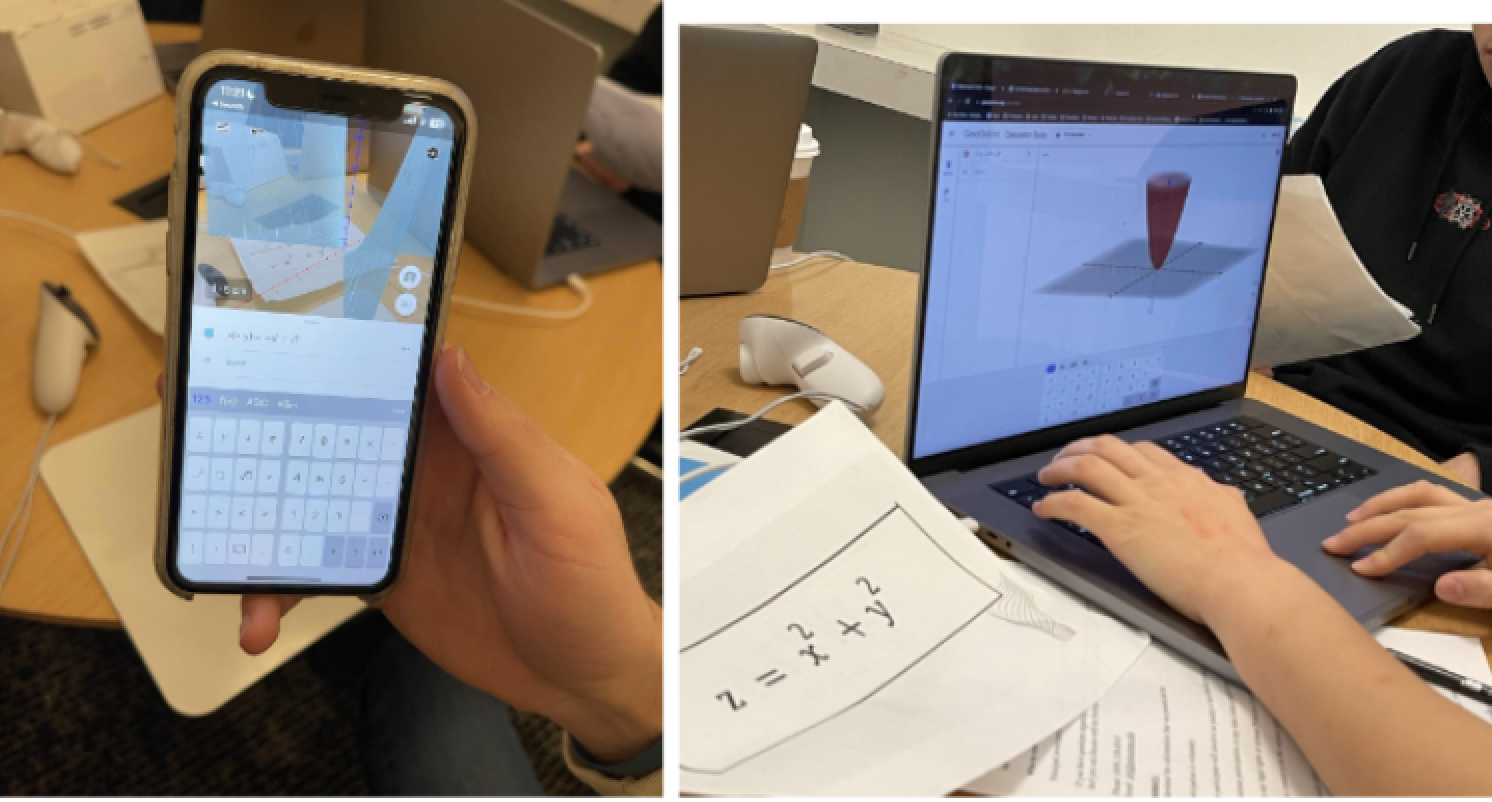Breaking the Plane: Exploring 3D AR Visualization of Multidimensional Mathematical Concepts on the Meta Quest 3

The technical systems studied in the order: Geogebra AR, Geogebra 3D Desktop, Breaking the Plane (our system on Meta Quest 3)
Today, I want to dive into something really cool that’s emerging in the world of technology and education – specifically, how augmented reality (AR) is making it easier to grasp complex mathematical concepts. We’ve been working on an application called “Breaking the Plane,” designed for the Meta Quest 3 headset, and it’s all about bringing 3D math functions to life. This project was developed for the newly-offered Human-Computer Interaction course at Princeton taught by the amazing Dr. Andrés Monroy-Hernández and Dr. Parastoo Abtahi!
What’s the Big Deal with AR in Math?
Understanding multidimensional math concepts can be one of the toughest tasks for students learning multivariable calculus. It’s one thing to see these functions on paper, but visualizing them in three dimensions is a whole other story. This is where AR comes in. By using AR technology, students can now see these abstract concepts in a tangible, interactive way.
Our Project: Breaking the Plane
Our team of four at Princeton University developed “Breaking the Plane” to tackle this very challenge. The app uses OCR (Optical Character Recognition) to let you input handwritten math equations, and then – voilà – it turns them into interactive 3D visualizations right before your eyes! This approach is super useful for both students and educators, making complex math more engaging and easier to understand.
Why Is It Better?
We compared our system with two other popular tools: Geogebra 3D Desktop and Geogebra 3D Calculator (mobile AR). The results? Our AR system was a hit! It scored highest on engagement with problems, was just as easy to use as the desktop version, and most participants preferred it for future use.
But, It’s Not All Perfect…
We did face some challenges. Since we couldn’t use the Meta Quest 3’s cameras for live OCR (due to privacy restrictions), we had to get a bit creative. We used a “Wizard-of-Oz” setup where an operator manually entered the equations. Not ideal, but it worked for our study.
What Did We Learn?
The feedback was amazing. Participants loved the interactive aspect of AR and found the OCR feature super handy. It looks like our system not only makes learning more engaging but also helps in understanding complex math problems better.
Looking Ahead
We’re excited about the potential of AR in education, especially for subjects like math that can benefit from visual and interactive learning tools. Our next steps? Exploring more user-friendly features and maybe even looking into voice commands or gesture controls.
Thank you!
Shoutout to our mentors and professors who guided us through this journey. Your insights and support were invaluable!
Final Thoughts
“Breaking the Plane” is just the beginning. As AR technology evolves, the possibilities for educational tools are endless. Imagine learning about the universe, human anatomy, or historical events through immersive experiences. The future of learning looks bright and we can’t wait to see where it goes!
Check out the research paper and the demo video above!